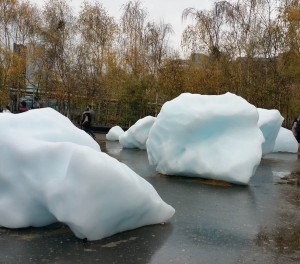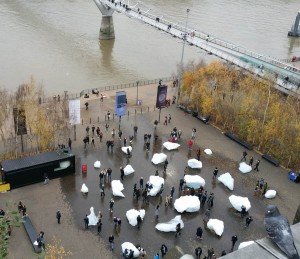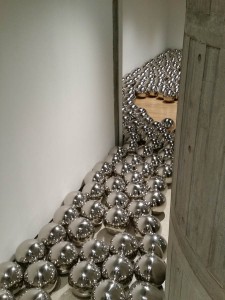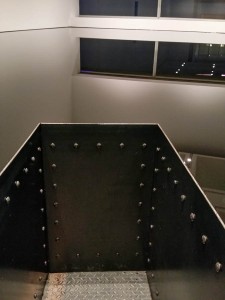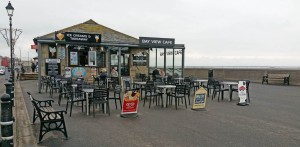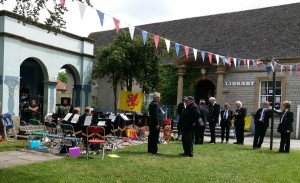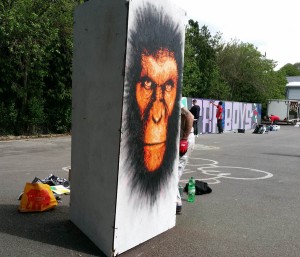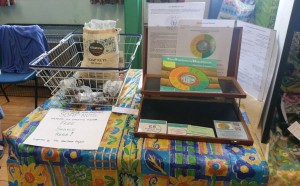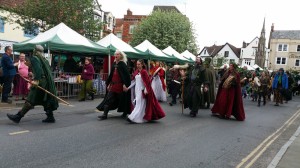In the chilly Spring, following the late snowfall, a Continental holiday sounded like a good alternative to the usual wet British summer. On impulse, I decided on a visit to Regensburg. Our fellow tourists in China had been a group of Bavarians, and they’d recommended this city.
I have to say, I’d endorse that. For the atmosphere of Old Europe – the cobbles, the tiny alleyways leading to the river, the baroque architecture – it’d be hard to beat, though I admit my experience is limited. Night life looks cheerful and varied too; mainly around the theme of beer!
I booked a hostel for a few days in July, and considered the journey. It didn’t seem enough of a challenge to fly; I wanted to see some of Europe from ground level. I’d never been on the Eurostar – I decided to get the train.
Booking the trip was difficult. Our upload speed here is so poor that security checks time out before completion, so I have to pay for orders by phone. None of the budget train companies have an effective phone line for this; you’re routed around in a circle back to their website.
Eurostar did eventually answer their phone after a long wait and confirmed that they did take payment on that line. However, I had to check the rest of the travel first, so I called Deutschbahn. I expected yet another recorded information line, but was pleasantly surprised when the phone was answered after two rings by a helpful lady who spoke perfect English.
I bought a ticket, including the Eurostar, for about £200 return. There were a couple of seat reservations – which turned out to be important – and exchange fees in there too. The tickets arrived within the week, carrying a stern admonition not to lose them.
It’s always useful, or at least comforting, to carry photocopies of important travel documents like these. Your travel insurance may be able to help if there’s a problem.
Somerset is a bit disconnected with public transport, as well as the internet. The most chancy part of any journey is the bus from the end of my road to Bristol, where international travel begins, so I never cut it fine with timing. Booking on the 6.13am Eurostar had saved me nearly enough money for a cheap hotel in St Pancras, allowing the trip to London to be made in a leisurely fashion.
This time, however, it wasn’t the 376 bus which let me down, but Great Western railway. I was warned the previous day, by email, that trains would be disrupted and it would be good if I went another day.

I had to go to Bristol tiresomely early, and got on a very crowded train to London Paddington. However, as part of the research for my adventure, I’d read ‘Infrastructure‘ by Brian Hayes, and was soon diverted by observing the complicated arrangements of wires, poles and boxes whose functions I was learning.
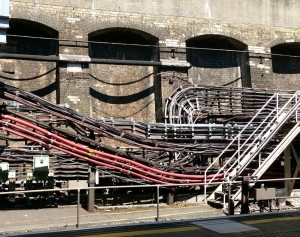
Navigating the oppressively hot Tube to St Pancras, I arrived an hour early for check in at the European Hotel in Argyle Square, a couple of minutes walk from the station when you went the right way. I had lunch under the shade of the trees in the little dusty park opposite while I waited.
Once I’d left my luggage in the tiny room, I walked to the British Museum, not far away. There was an interesting exhibition of ethnic art, mainly from sea-going communities, but the place was packed and the air conditioning inadequate. The streets were depressingly litter-strewn as well, and the bins not emptied often enough. For a major tourist destination, London could do with some work!

It was much cooler the next morning at 5 o’clock when I headed for St Pancras International. The check in for the Eurostar resembles that for air travel; you’re advised to start the process an hour before departure. Although manual check-in was quiet at this time of day, it had been quite crowded the previous afternoon.
With Deutschbahn, the ticket is a Fahrkarte. The other official bits of paper are only the Reservierung, reservation slips – make sure you have the right one ready!
The Departure lounge had only one cafe-bar, and probably not enough seating for busy periods. Boarding begins about 20 minutes before the train leaves, when there is a terrific rush for the right platform – pointless as all seats are reserved!

It was difficult to find the right coach, as their numbers were shown on a digital display which one needed to be looking directly at. From the side, it seemed to be a plain metal insert of some kind.
The train was quiet at this early hour, speeding through the waking countryside. A brief glimpse of the sea, then we plunged into a dark and featureless tunnel. Emerging into daylight, it was difficult to believe that this was France. The pylons were a different shape, and the sea was behind us.

I’d been a bit worried when planning my journey that trains to Germany left from Brussel-Zuid, while the Eurostar arrives at Brussel-Midi. They’re right next to each other. Exit the Eurostar platform towards ‘Correspondances’ and that takes you to the Brussel-Zuid end of the station.
Find your train on the departure board. It’s useful to know the train number, which should be on your ticket.

I headed for Platform 5, but this soon became so crowded with passengers and trains for Paris Nord, that the Frankfurt train was relocated to Platform 3. Luckily I’d been chatting to a Belgian lass, who tipped me off, as I wouldn’t have known from the announcements. Keep a close eye on those destination boards for last minute changes!

Your train vanishing from this helpful platform display may be another clue that it’s not coming!
There was more trouble in store for me at Frankfurt, where I accidentally got off at the Frankfurt Main (Airport) stop. A main station in Germany is, of course, a Hauptbanhof; ‘Main’ in this case was referring to the river, as I realised much later. However, everybody else was leaving the train, so I followed.
By the time I had worked out what was going on, it was getting late. Hastily buying a ticket for a regional train which would take me to Frankfurt Haubtbahnhof and my connection to Regensburg, I raced to the platform. We all dashed over the bridge to another platform when the train arrived there instead (this seems to be a popular sport!), then there was a painfully slow journey as it stopped very thoroughly at a number of stations on the way.
I arrived three minutes before my train left, found its number on the destination board, identified the platform and ran down a very long concourse to arrive with seconds to spare! It was some time before I could catch my breath enough to look for a seat!
Someone had mine; the conductor found me another one when the train got busy, and people were sitting in the corridor. I discovered the reservations were marked on more of those obscure digital displays beside each seat. I had wondered how people identified free seats.

Despite the difficulties, most of the trip was relaxing, and I did get a good view of the changing countryside. Deciduous forests changed to conifers and back; there were fields of solar panels, and grape terraces. Clusters of whitewashed houses stood among pasture; sometimes we effortlessly outpaced motorway traffic to a backdrop of clean white factories.
I arrived in Regensburg at 5.30 pm. Head straight for the exit at the station – don’t get drawn into Retail Hell, from which it can be hard to extract yourself!

The number 17 bus to the hostel was not every 6 minutes as Google had suggested, but more like once every hour. I managed to navigate to the Microverse using my printed-out map, and asking locals in my rudimentary German; it was only about twenty minutes walk.
Once at their office in Arnulfsplatz, I picked up one of those splendid town maps which are torn from a huge pad, and appear at hostels all over Europe. Bus stops, street names and tourist attractions were all ready for a few days’ exploring!
Your travel insurance may help if you miss a connection due to a delay or other problem with the trains. Try and get someone to sign something for you.
If you miss it through stupidity, you could well be on your own! Luckily, buying a train ticket just before departure seems to be the same price as advance tickets in Germany. A valid credit card provides a useful contingency plan.



